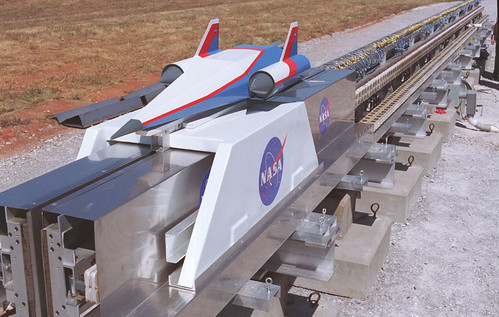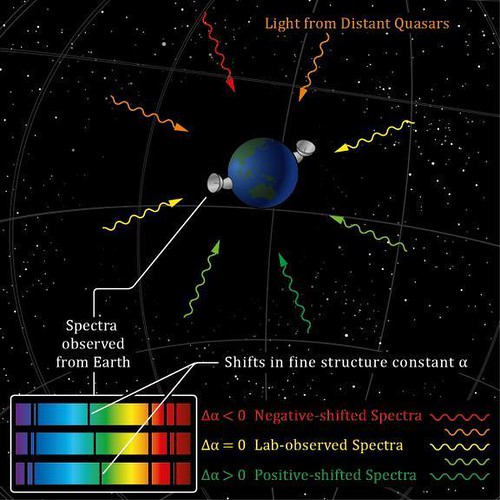Cobbet Hill earthstation expands satellite services in Europe, Middle East, and Africa with purchase of third iDirect Evolution hub.
[PR Newswire – 09/11/2010]
Arianespace signs production contract with European Space Agency to produce first operational Vega rocket launch; will deliver five launchers.
[Satellite Today – 09/10/2010]
CBS’s Stranathan believes the evolution from satellite back to terrestrial may begin within the next five years, with multiple carriers and growth of fiber-optic networks nationwide.
[Satellite Today – 09-10-2010]
Row 44 raises $37m in funding to continue rolling out its in-flight satellite service for Southwest Airlines.
[Satellite Today – 09/10/2010]
SIDOFI Communications Investments, Ltd. plans to acquire a 9.33% stake in Asianet Satellite Communications, Ltd., an India-based cable network services company, from Americorp Ventures Limited.
[Trading Markets – 09/10/2010]
Focus on "the next big thing" at IBC 2010 continues to be 3-D.
[Satellite Today – 09/10/2010]
Iridium announces that Norbulk Shipping will install Iridium’s OpenPort systems across its fleet of more than 70 ships.
[Satellite Spotlight – 09/10/2010]
Astrium leases Hylas 1 capacity to test military Ka-band services.
[Satellite Today – 09/09/2010]
KVH offers Premier Support 24 X 7 X 365 for owners of vessels with the TracPhone V7 satellite communications system.
[Trading Markets – 09/10/2010]
RRsat partners with BT to deliver first intercontinental interactive 3D video broadcast between London and Tel Aviv.
[Market Watch – 09/10/2010]
Russian Rokot orbits a Gonets-M satellite and two Kosmos satellites according to Russian Defense Ministry spokesman.
[SatNews – 09/09/2010]
Via Embratel adopts Entropic’s Channel Stacking Swtich technology, to better serve customers in multiple-dwelling unit (MDU) environments by supporting multiple tuners over a single cable.
[Market Watch – 09/09/2010]
Space Exploration Technologies (SpaceX) and Astrium engage in commercial agreement to provide dedicated launch services to European small satellite market.
[SatNews – 09/09/2010]
The satellite sector of the economy has ridden through the collapse of the economy well and business now looks to be booming, though warning flags exist.
[Satellite Today – 09/09/2010
SES WORLD SKIES gets extension from Services Sound and Vision Corporation to continue delivering television and radio programming to British troops around the world.
[SatNews – 09/09/2010]
Military and commercial wideband satellites to provide broader coverage and address bandwidth surge, transforming battlefield communications.
[Defensesystems – 09/09/2010]
SES ASTRA and Digitaria create nationwide energy monitoring system in Italy using Newtec’s Sat3Play technology for connecting remote sites.
[SatNews – 09/09/2010]
Bell Canada is on the verge of a major effort to get inside Canadian family rooms with the introduction of new Internet-based TV services.
[The Vancouver Sun – 09/10/2010]
Wegener receives order for receivers to be used in expansion of international background music network.
[Market Watch – 09/09/2010].
Euroconsult releases report forecasting the number of satellites it expects to be launched by the end of the decade – 1,220 satellites.
[BBC Spaceman blog – 09/09/2010]
Intelsat is expanding Russian DTH satellite provider Orion Express’ programming capacity on the Intelsat 15 satellite.
[Satellite Today – 09/09/2010]
RRsat enters into partnership with Europe’s Digital Media Center (DMC) to offer a complete global playout and content delivery solutions to regional broadcasters.
[Satellite Today – 09/09/2010]
Hughes Communications receives Euroconsult award as Broadband Satellite Operator of the Year.
[Market Watch – 09/08/2010]
SES extends its Multi Launch Agreement with International Launch Services through the end of 2014.
[Satellite Today – 09/08/2010]
SES ASTRA signs new service distribution agreement with Amman, Jordan-based satellite services provider, GSISCO (German Satellite Internet Service Company) to market its ASTRA2Connect service in Iraq, Jordan, Lebanon, and Yemen.
[SatNews – 09/08/2010]
Sky Deutschland to launch 3-D satellite service in October.
[Satellite Today – 09/08/2010]
KVH to acquire software engineering company Virtek Communications.
[Market Watch – 09/08/2010]
Comtech Mobile Datacom receives $25m military contract.
[Business Week – 09/08/2010]
Harmonic encoders and statistical multiplexing implemented in headend for new South African pay TV service.
[Market Watch – 09/08/2010]
Gilat is selected by Kenya Commercial Bank to provide SkyEdge II broadband satellite network.
[SatNews – 09/08/2010]
Iridium collaborates with Danish Maritime Safety Administration in project to demonstrate maritime safety information broadcasts.
[Market Watch – 09/08/2010]
Comtech and CPI announce termination of agreement and plan of merger.
[SatNews – 09/08/25010]
Global VSAT Forum launches Maritime Satcom Forum to expand deployment of satellite technology in the maritime industry.
[PR Newswire – 09/08/2010]
Stratos Global successfully deploys Inmarsat FleetBroadband satellite communications service on the entire fleet of 70 container vessels for Evergreen Marine Corp.
[SatNews – 09/08/2010]
Lockheed Martin is selected by GeoEye to launch the company’s next generation high-resolution Earth-imaging satellite, GeoEye-2.
[SatNews – 09/08/2010]
European scientific satellite Ocean Circulation Explorer fixed and again transmitting data.
[UPI – 09/07/2010]
Canadian satellite company Com Dev dismisses its CEO after heavy losses in Q3 2010.
[Satellite Today – 09/07/2010]
Telefonica International Wholesale Services of Peru chooses Gilat for broadband satellite communications network.
[Market Watch – 09/07/2010]
Spanish broadband company Quantis is rolling out full-service broadband solution to remote and rural communities across Spain based on Newtec’s Ka-band Sat3Play technology, hub, and terminals.
[Satellite Today – 09/07/2010]
VIVACOM, the leading telecommunications provider in Bulgaria, signs multi-year multi-transponder contract for capacity on Intelsat 12 satellite.
[SatNews – 09/07/2010]
U.S. Army awards TeleCommunications Systems up to $3.8m for deployable satellite systems equipment.
[Market Watch – 09/07/2010]
Europe Media Port announces that emerging Iranian DTH broadcaster Kahkeshan Digisat has selected EMP to provide DTH uplink teleport and transmission services to its European and Middle East targeted markets.
[SatNews – 09/07/2010]
StreamXcel Plus switching between satellite networks promises "always on" connectivity to shipping vessels.
[TMCnet – 09/07/2010]
In the fourth launch in five weeks, Chinese broadcasting satellite is placed in orbit.
[Space.com – 09/07/2010]
Spain and Norway to build a satellite to be launched in 2014 to be used for both civilian and military purposes.
[physorg.com – 09/07/2010]
Stratos Global joins forces with new Channel Partner, Zedi Inc., to deploy the world’s first large-scale SCADA network based on Inmarsat’s BGAN mobile broadband satellite service.
[SatNews – 09/07/2010]
American company Orbital Sciences begins production of first national telecommunications satellite of Azerbaijan.
[Azerbaijan Business Center – 09/07/2010]
Long-standing Cobham dealer Ship Equip. places the largest single quantity order ever received for the company’s Sea Tel 09 series antennas.
[SatNews – 09/07/2010]
GE Satcom uses Newtec’s TelliCast IP software to power its maritime triple-play service.
[SatNews – 09/07/2010]
WBMSAT PS satellite communications systems services













